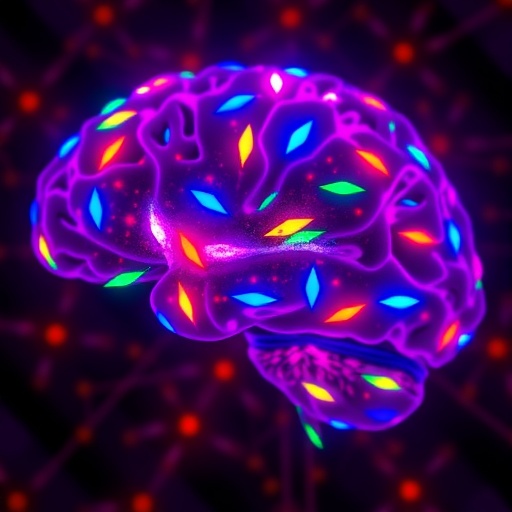
In a groundbreaking advance that could redefine therapeutic strategies against glioblastoma, researchers have uncovered a potent mechanism by which the inhibition of anti-apoptotic Bcl-2 family proteins synergizes with endoplasmic reticulum (ER) stress inducers to dismantle tumor cell survival machinery. This discovery, heralded for its precision-targeting of autophagy pathways alongside apoptotic modulators, offers a promising avenue to circumvent the notorious resistance mechanisms fueling glioblastoma aggressiveness. The intricate interplay between apoptotic regulation and autophagic flux elucidated in this study opens profound insights into cellular stress responses and highlights new molecular vulnerabilities in one of the deadliest brain cancers.
Glioblastoma (GBM) represents a formidable challenge in neuro-oncology, marked by invasive growth, profound heterogeneity, and profound resistance to conventional therapies. Central to its survival is a dysregulated balance between apoptosis and autophagy, dynamic processes governing cellular fate. Tumor cells exploit anti-apoptotic proteins, notably members of the Bcl-2 family, to evade programmed cell death, while employing autophagy as an adaptive response under metabolic stress. This dual protective mechanism not only preserves tumor viability but also confounds therapeutic efficacy, necessitating interventions capable of concurrently disrupting these survival axes.
The current research illuminates how targeted suppression of anti-apoptotic Bcl-2 family proteins heightens susceptibility to ER stress-induced cytotoxicity by impeding autophagic degradation pathways. This synergy triggers enhanced apoptotic cell death, effectively tipping the cellular equilibrium toward lethal outcomes in glioblastoma cells. By integrating pharmacological inhibitors of Bcl-2 with agents that induce ER stress, the investigators achieved a cooperative impact that surpasses the effects of each treatment alone. Such combinatorial strategies are emblematic of modern oncology’s precision medicine approaches, capitalizing on synthetic lethality and multitargeted assault on cancer cells.
.adsslot_liHu3Tg2Ew{width:728px !important;height:90px !important;}
@media(max-width:1199px){ .adsslot_liHu3Tg2Ew{width:468px !important;height:60px !important;}
}
@media(max-width:767px){ .adsslot_liHu3Tg2Ew{width:320px !important;height:50px !important;}
}
ADVERTISEMENT
Mechanistically, the study delineates how inhibition of Bcl-2 family proteins disrupts the formation and maturation of autophagosomes, critical vesicles in autophagy responsible for sequestering and degrading damaged organelles and proteins. This disruption leads to the accumulation of toxic damaged cellular components and heightened ER stress, which in turn activates pro-apoptotic signaling cascades. The ER stress response, often protective at moderate levels, becomes maladaptive under these combined insults, triggering pathways such as the unfolded protein response (UPR) to mediate apoptosis. These findings underscore the convergent roles of autophagy blockade and ER stress amplification in triggering tumor cell death.
Autophagy, a catabolic process critical for cellular homeostasis, is frequently co-opted by cancer cells to survive under stressful conditions including hypoxia, nutrient deprivation, and therapeutic assault. By interfering with the function of Bcl-2 family members, the research reveals a critical vulnerability wherein glioblastoma cells lose their ability to maintain autophagic flux. This impairment not only curtails their metabolic flexibility but also leads to the buildup of misfolded proteins and dysfunctional organelles, exacerbating intracellular stress and promoting apoptotic cascades.
The utilization of ER stress inducers in this combinatorial context effectively exploits the heightened basal stress state of glioblastoma cells, which often manage chronic ER stress as part of their malignant phenotype. Pharmacological agents that further stimulate ER stress, in the face of impaired autophagy, push tumor cells beyond a threshold, precipitating irreversible damage and cell death. This therapeutic window offers a precision-targeted modality by which to selectively eradicate cancer cells while sparing normal tissue, which generally possesses more robust homeostatic controls and apoptotic thresholds.
Further deepening the understanding of glioblastoma’s resilience, the study leverages advanced molecular and cellular biological techniques to quantify apoptotic markers, autophagic flux, and ER stress responses. Key experimental findings demonstrate that combined inhibition triggers intense caspase activation, accumulation of LC3-II (a hallmark of autophagy disruption), and elevated expression of stress-related proteins such as CHOP and ATF4. These biochemical hallmarks reinforce the concept that therapeutic induction of synthetic lethality via coordinated autophagy inhibition and ER stress amplification can effectively override glioma cell defenses.
The implication of Bcl-2 family proteins in autophagy regulation extends beyond their canonical anti-apoptotic functions, positioning them as crucial nodal points in cellular fate decisions. By targeting these proteins, the study exposes tumor cells to fatal vulnerabilities stemming from their reliance on anti-apoptotic signals for survival under the continuous onslaught of ER stress and metabolic challenges. Importantly, this dual targeting counters one of glioblastoma’s key resistance mechanisms, which has historically undermined monotherapeutic interventions.
Translationally, these findings propel the prospect of novel combination therapies employing clinically evaluable Bcl-2 inhibitors alongside ER stress-inducing agents, potentially integrating with existing modalities such as radiotherapy and chemotherapy. Such combinatory regimens, tailored to exploit glioblastoma’s unique vulnerabilities, may lead to improved patient outcomes by enhancing tumor cell kill, reducing resistance, and limiting systemic toxicity. The study paves the way for subsequent clinical evaluations, biomarker development, and personalized therapeutic designs.
Importantly, this research contributes to a broader paradigm shift in cancer biology that appreciates the nuanced and intertwined regulation of apoptosis and autophagy. Where once these processes were studied in isolation, contemporary understanding recognizes their cross-talk and co-dependence, particularly within the context of tumor cell survival and death. The insights garnered here spotlight the importance of systems-level approaches to unraveling cancer cell biology and identifying synergistic combinations that maximize therapeutic efficacy.
Moreover, the study highlights the utility of ER stress markers and autophagic indicators as potential biomarkers for treatment response and disease prognosis in glioblastoma. By monitoring changes in these pathways, clinicians may gain predictive insights into tumor dynamics and therapeutic susceptibility, facilitating more dynamic and responsive treatment regimens. This biomarker-driven approach aligns with precision oncology principles and the ongoing quest for biomarkers that correlate closely with functional tumor biology.
At the cellular signaling level, uncovering how ER stress and autophagy intersect to control glioblastoma viability provides footholds for drug discovery targeting interconnected pathways such as PERK, IRE1α, and ATF6 branches of the UPR, as well as modulators of autophagosome formation and lysosomal degradation functions. The dual disruption strategy outlined in this study exemplifies integrative therapeutic targeting that could overcome the multifactorial resistance landscape characteristic of gliomas.
Additionally, this research underscores the importance of the tumor microenvironment and its influence on cellular stress responses. Glioblastoma’s inhospitable niche, characterized by fluctuating oxygen levels, nutrient scarcity, and immune modulation, conditions tumor cells to become adept at manipulating apoptotic and autophagic pathways. Therapeutic strategies that exploit these adaptions, by leveraging ER stress inducers and Bcl-2 inhibition, confront the tumor’s adaptive resilience head-on, exploiting the very mechanisms it employs for survival.
Collectively, the findings reported mark a significant step forward in unraveling the complex survival networks of glioblastoma and critically advancing therapeutic innovation. By demonstrating that simultaneous disruption of anti-apoptotic machinery and autophagy potentiates ER stress-induced apoptosis synergistically, this work charts a promising path toward effective glioma eradication. This approach may well extend beyond glioblastoma, offering insights applicable to other malignancies characterized by similar dependencies on apoptotic and autophagic homeostasis.
As glioblastoma remains one of the most lethal and refractory brain tumors, the urgency of translating these insights into clinical impact cannot be overstated. The therapeutic paradigm emerging from this study, combining Bcl-2 family inhibition with ER stress induction to disrupt protective autophagy, offers hope for better precision-targeted treatments that may extend survival and improve quality of life for patients afflicted by this devastating disease. Future research focusing on optimizing dosages, minimizing off-target effects, and integrating these combinations with immunotherapies could further amplify clinical benefits.
In essence, this study epitomizes the convergence of molecular biology, pharmacology, and oncology in the quest to decode and dismantle cancer’s intricate survival strategies. The elegant elucidation of the interplay between apoptotic regulatory proteins, autophagy dysfunction, and ER stress provides a blueprint for designing next-generation therapeutics that hit cancer cells where they are most vulnerable. Such breakthroughs affirm the promise of targeted, mechanism-based cancer therapies in transforming the landscape of glioblastoma treatment.
Subject of Research: Glioblastoma cell death mechanisms through combined inhibition of anti-apoptotic Bcl-2 family proteins and ER stress-induced autophagy disruption
Article Title: Inhibition of anti-apoptotic Bcl-2 family members promotes synergistic cell death with ER stress inducers by disrupting autophagy in glioblastoma
Article References:
Huang, T., Takagi, S., Koike, S. et al. Inhibition of anti-apoptotic Bcl-2 family members promotes synergistic cell death with ER stress inducers by disrupting autophagy in glioblastoma. Cell Death Discov. 11, 340 (2025). https://doi.org/10.1038/s41420-025-02632-4
Image Credits: AI Generated
DOI: https://doi.org/10.1038/s41420-025-02632-4
Tags: apoptosis resistance mechanisms in glioblastomaapoptotic regulation in cancer therapyBcl-2 inhibition in glioblastomaendoplasmic reticulum stress in cancer therapyenhancing cytotoxicity in glioblastomaglioblastoma survival mechanismsglioblastoma treatment resistancemolecular vulnerabilities in brain cancerneuro-oncology research advancementssynergistic effects of Bcl-2 and ER stresstargeting autophagy in brain tumorstherapeutic strategies against glioblastoma





